Don Matesz, who has embraced low-fat and low-cholesterol dieting, recently stated that “I now consider anything over ~160 mg/dl [to be] excess serum cholesterol” and cited in his support the Cordain-Eaton claims that healthy hunter-gatherers had low serum cholesterol. Of course, we looked at that and found that healthy hunter-gatherers generally had serum cholesterol over 200 mg/dl and that hunter-gatherers with low serum cholesterol generally had high infectious burdens and short lifespans. See:
- Did Hunter-Gatherers Have Low Serum Cholesterol?, Jun 28, 2011
- Serum Cholesterol Among the Eskimos and Inuit, Jul 1, 2011
- Serum Cholesterol Among African Hunter-Gatherers, Jul 5, 2011
- Serum Cholesterol Among Hunter-Gatherers: Conclusion, Jul 7, 2011
When Erik referenced our series and asked, “What do you think of the argument that low cholesterol in hunter gatherer populations stems from infections and parasites?”, Don replied:
Mean total blood cholesterol of healthy human neonates is about 72 mg/dl.
Is this due to infections and parasites?
In case this question was not merely rhetorical, let me answer: No.
But it’s an interesting biology question. Why do neonates have low serum cholesterol?
Neonates and Infants
The study that Don cited [1] looked at cord blood from neonates. Cord blood is blood that circulates on the fetal side of the placenta in utero. As soon as the baby is delivered, the cord is cut and blood ceases to circulate.
So the cord blood serum cholesterol of 70.3 mg/dl is really sampling fetal cholesterol – the blood of babies who have never eaten and never breathed.
The not eating part is relevant, because HDL is generated from the metabolism of chylomicrons created in the intestine when fat is eaten, and LDL is generated from VLDL particles that carry excess calories as triglycerides from the liver. So eating generates LDL and HDL. We might expect that LDL and HDL, and thus TC, levels will rise as soon as the neonate starts feeding.
We can check this out by looking at cholesterol levels in infants. The following data is from Japan [2], but any healthy population would give similar results:
Serum total cholesterol in infants, mg/dl, by feeding method
| Infant Age | Formula-fed | Partially breastfed | Breastfed |
| One month | 117 | 142 | 163 |
| Six months | 140 | 162 | 194 |
Source: Tables 2 and 3, Isomura et al 2011.
The key data is in the rightmost column, the breastfed babies. By one month postpartum, TC is 163 mg/dl (“excess serum cholesterol” on Don’s view). By six months, it is 194 mg/dl.
Formula fed babies had a much smaller rise in TC.
To understand the pattern of this data, let’s look at three issues:
- Why do formula-fed babies have lower TC than breastfed babies?
- Why do neonates have low TC?
- Why do breastfed babies end up with TC near 200 mg/dl?
Formula is a lipid-deficient food
Why do formula fed babies have lower serum cholesterol? One contributing factor may be a dietary lipid deficiency.
Human breast milk is rich in cholesterol. One study found that the cholesterol content of human breast milk follows a diurnal rhythm with a low of 140 mg/L during sleeping hours and early morning, and a high of 220 mg/L in the afternoon and evening. Other studies agree that human breast milk always has more than 100 mg/L cholesterol. Babies typically drink 750 mL/day, so a breastfed baby’s daily cholesterol intake is 100 to 200 mg.
Scaled by body weight, this would be the equivalent of 1.5 to 3 grams cholesterol per day for adults – approximately ten times the typical cholesterol intake of American adults.
Clearly, evolution thinks babies should get plenty of cholesterol.
But cholesterol levels in formula are much lower:
Since … infant formulas contain very little cholesterol (10 to 30 mg/L) (Huisman et al., 1996; Wong et al., 1993), it is not surprising that plasma cholesterol concentrations are higher in infants fed human milk than in formula-fed infants.
I guess the formula makers don’t consider cholesterol to be a desirable nutrient. This may be an extremely consequential mistake.
Low TC in Neonates May Have Evolved to Suppress Immunity
So why do neonates have a very low TC?
In addition to fat and cholesterol transport, LDL and HDL both have immune functions. Low serum cholesterol signifies a loss of these immune functions. Normal immune function is associated with TC around 200 mg/dl or higher.
But infants are well known to have suppressed immunity. This is important: if the fetus had an ability to generate antibodies and mount an immune response, it might generate immune attacks against the mother leading to miscarriage.
After birth, a baby’s immune system gradually matures:
A baby’s immune system is not fully developed until he/she is about six months-old. In the meantime, pregnant mothers pass immunoglobulin antibodies from their bloodstream, through the placenta, and to the fetus. These antibodies are an essential part of the fetus’s immune system. They identify and bind to harmful substances, such as bacteria, viruses, and fungi that enter the body. This triggers other immune cells to destroy the foreign substance….
Immediately after birth, the newborn has high levels of the mother’s antibodies in the bloodstream. Babies who are breastfed continue to receive antibodies via breast milk…. This is called passive immunity because the mother is “passing” her antibodies to her child. This helps prevent the baby from developing diseases and infections.
During the next several months, the antibodies passed from the mother to the infant steadily decrease. When healthy babies are about two to three months old, the immune system will start producing its own antibodies. During this time, the baby will experience the body’s natural low point of antibodies in the bloodstream. This is because the maternal antibodies have decreased, and young children, who are making antibodies for the first time, produce them at a much slower rate than adults.
Once healthy babies reach six months of age, their antibodies are produced at a normal rate.
LDL particles, by presenting pathogen toxins to macrophages which can then present them on MHC molecules, play an important role in the generation of antibodies. (See Blood Lipids and Infectious Disease, Part II, July 12, 2011.) Low LDL signifies a reduced ability to generate antibodies.
Low LDL is therefore highly desirable as long as the baby remains in the womb, and in fact LDL levels are very low in utero.
But persistent low LDL after birth is dangerous: it makes the infant vulnerable to infections. Likewise, HDL has important immune functions (see HDL and Immunity, April 12, 2011). So LDL and HDL gradually rise to normal physiological levels, finally reaching a TC of 200 mg/dl after 6 months in breastfed babies – precisely when the babies attain normal immune function.
If TC of 190 mg/dl or higher signifies normal immune function, then formula fed babies are still immune suppressed at 6 months. Extrapolating the rise in TC, partially breast fed babies might achieve normal immune function at 12 months and formula fed babies might not achieve normal immunity until age 24 months!
Immunity Matters for Infant Health
I don’t want to delve too deeply into this, but infants are vulnerable to infections – this is why infant mortality has always been high. It still is today, and 6 months of age is still the canonical age when the danger lessens:
Globally, approximately 4,000,000 children less than 6 months of age die each year at a rate of 450 deaths per hour. In addition, high hospitalization costs for infected infants are incurred in the United States with an annual estimated cost of $690,000,000.
Formula feeding definitely escalates the risk:
In the United States, more than 40% of all infant hospitalizations are attributable to infectious disease … Diarrhoeal diseases and digestive tract infections are the most common infectious diseases in infants….
Breast feeding has been shown to have a number of beneficial effects in infants, including protection against infectious and allergic diseases. [3]
In this study, 41% of formula-fed infants developed infections between ages 5 and 8 months. [3]
A study from Brazil [4] shows that breastfeeding makes a huge difference in infant mortality:
In a population-based case-control study of infant mortality in two urban areas of southern Brazil, the type of milk in an infant’s diet was found to be an important risk factor for deaths from diarrhoeal and respiratory infections. Compared with infants who were breast-fed with no milk supplements, and after adjusting for confounding variables, those completely weaned had 14.2 and 3.6 times the risk of death from diarrhoea and respiratory infections, respectively. Part-weaning was associated with corresponding relative risks (RR) of 4.2 and 1.6. [4]
Now, deficient serum cholesterol is not the sole factor accounting for higher mortality in formula fed babies. But it is a contributing factor.
Conclusion
If serum cholesterol is healthiest below 160 mg/dl, then formula fed babies have excellent blood lipids despite a high disease and mortality rate, but breastfed babies are already in trouble at age one month and are suffering a shocking dyslipidemia at age six months, despite excellent health.
I think that’s absurd. A more logical interpretation of the evidence is this.
Healthy babies achieve serum cholesterol levels around the adult norm of 200 mg/dl by age six months.
Serum cholesterol levels below 190 mg/dl or so indicate immune suppression and increased risk of infectious disease – whatever the age of the human in question. Formula fed babies are immune suppressed for an extended period – well beyond the six month period of a healthy breastfed baby.
There are multiple causes of low serum cholesterol. A high infectious burden is one; never having eaten is another; a lipid-deficient diet is a third. But there is no evidence I am aware of suggesting that low serum cholesterol is a desirable condition.
References
[1] Mishkel MA. Neonatal plasma lipids as measured in cord blood. Can Med Assoc J. 1974 Oct 19; 111(8):775-80. http://pmid.us/4370703.
[2] Isomura H et al. Type of milk feeding affects hematological parameters and serum lipid profile in Japanese infants. Pediatr Int. 2011 Mar 21. http://pmid.us/21418403.
[3] Picaud JC et al. Incidence of infectious diseases in infants fed follow-on formula containing synbiotics: an observational study. Acta Paediatr. 2010 Nov;99(11):1695-700. http://pmid.us/20560895.
[4] Victora CG et al. Evidence for protection by breast-feeding against infant deaths from infectious diseases in Brazil. Lancet. 1987 Aug 8;2(8554):319-22. http://pmid.us/2886775.







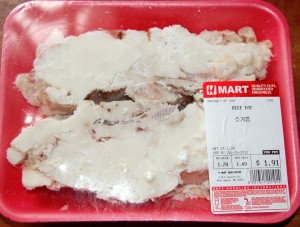
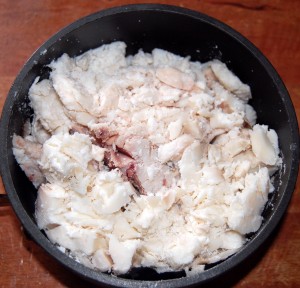

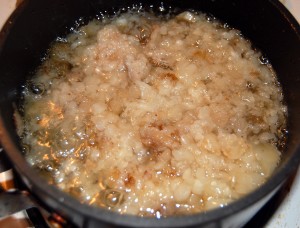
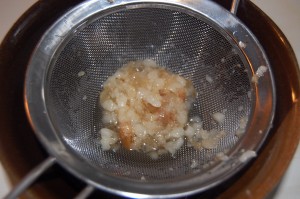

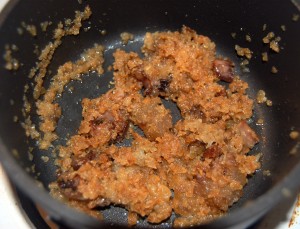






Recent Comments